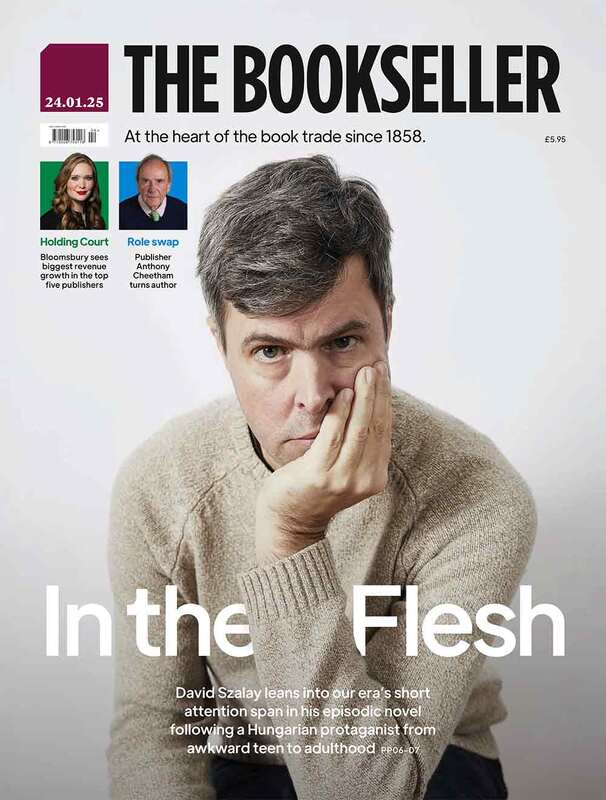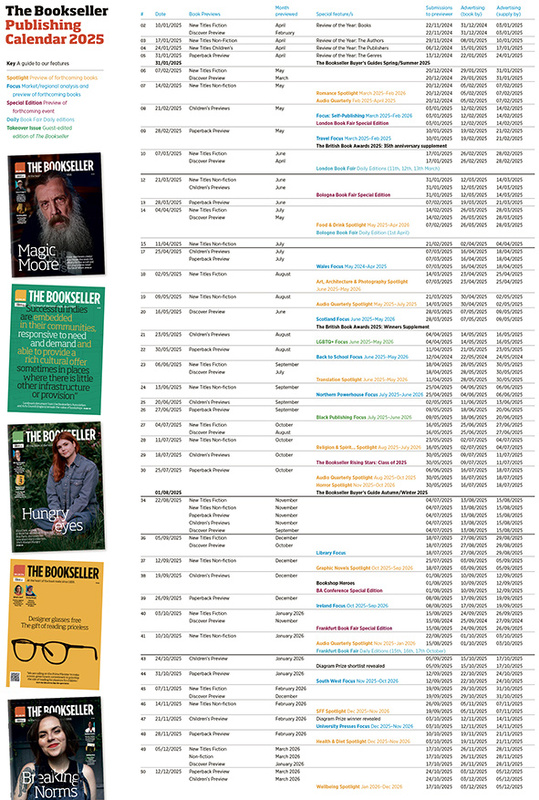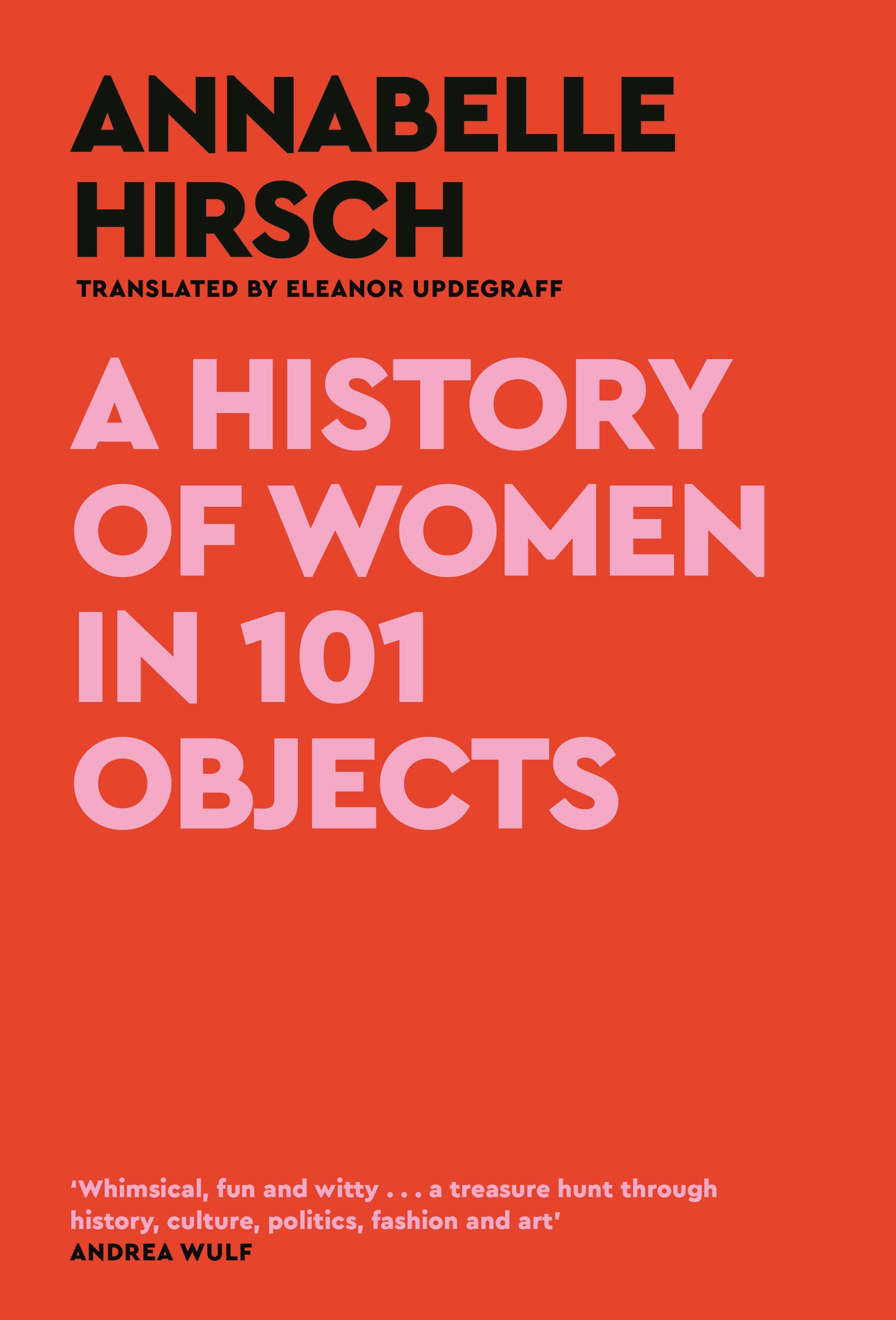You are viewing your 1 free article this month. Login to read more articles.
Annabelle Hirsch in conversation about her fascination with objects and women's history
 Caroline Sanderson
Caroline SandersonCaroline Sanderson is a non-fiction writer, editor and books journalist. Her books include a travel narrative, A Rambling Fancy: in the F ...more
Annabelle Hirsch has written an anthology of women’s history, elegantly translated by Eleanor Updegraff.

Caroline Sanderson is a non-fiction writer, editor and books journalist. Her books include a travel narrative, A Rambling Fancy: in the F ...more
What connects cave paintings from 20,000 BC, a 16th-century glass dildo, an anti-slavery coin, Greta Garbo’s ballpoint pen, Tupperware and Kim Kardashian’s ring? The answer is: they all feature in A History of Women in 101 Objects, a stirring new anthology curated by writer and journalist Annabelle Hirsch, which aims to demonstrate “how rich and diverse, how complex and non-linear the history of all women is”.
With each object as a staging post on a broadly chronological journey, this “cabinet of curiosities” is a veritable treasure trove of stories about women’s lives across the millennia. Already a hit in Hirsch’s native Germany where it was published last year, the book is now set to be published in countries across Europe and beyond.
That was one of the great joys, and challenges, of translating the book; the fact that I loved Annabelle’s voice so much
Canongate’s UK edition has been translated from German by Eleanor Updegraff (whose name rightly appears on the front cover) and comes garlanded with advance praise from the likes of Gillian Anderson, Olivia Colman, Salena Godden and Dr Janina Ramirez. Exciting—currently under-wraps—plans are being hatched for the audio edition, coming in February 2024.
Imaginary walks
Hirsch, who will be in the UK for publication, joins me for our video-call interview from her native city of Munich where she is spending the summer. Half-German and half-French, Hirsch studied art history, philosophy and theatre in both Munich and Paris, before moving to Berlin to write for German art magazine Weltkunst and the Frankfurter Algemeine Zeitung. After a spell reporting for that paper from Paris, she moved to Rome where she now lives.
“I have always been fascinated by women’s stories”, responds Hirsch in fluent English when I ask her what inspired her to write the book. “And as I say in the introduction, my memory has a habit of hanging on to details that might seem uninteresting to others”.
In the opening lines of the book, Hirsch describes visiting the former home of Danish novelist Karen Blixen, and noticing the copper pans stacked up in a corner of the kitchen. “I found myself trying to imagine that small, slender woman pottering around with them, how she might have felt, what she might have been thinking about”, she writes, highlighting her penchant for “taking imaginary walks through the distant past”.
Hirsch was also partly inspired by Neil MacGregor’s A History of the World in 100 Objects. “Objects are a very good way to get close to people. But it also makes much sense for women because, for a very long time in history, the only place where they had a little bit of power was the intimate space. And because objects are part of this space, they are naturally connected”.
We tend to think that the only thing that’s important is the loud person in the room—but that’s what fucks up the world, no?
The domestic nature of many such objects may seem of minor consequence, but Hirsch channels a steely perceptiveness and not a little subversive humour in revealing their quiet power and enduring significance. “We tend to think that the only thing that’s important is the loud person in the room—but that’s what fucks up the world, no?”, says Hirsch tartly.
Having settled on a broadly chronological structure that would allow the reader to be “a flaneur through history”, the process of selecting which objects to write about took around two years. Hirsch quickly alighted on items it felt essential to feature, for example the Enovid contraceptive pill (Object 86), but she also unearthed many lesser known stories of significance, among them Revista Sur (Object 72), a magazine from the 1930s, edited by Argentine writer Victoria Ocampo. Its inclusion serves to highlight the role of women as translators, “transferring thoughts from one language to another”.
Wholly apt then that A History of Women in 101 Objects itself has a female translator—Eleanor Updegraff—who captures the sparky wit of Hirsch’s prose with a jaunty elegance. When I speak to Updegraff—who lives in Vienna—via Zoom, she tells me that for this, her first full-length book for a UK publisher, it was this distinctive style that she was most keen to convey. “That was one of the great joys, and challenges, of translating the book; the fact that I loved Annabelle’s voice so much”.
Among her own favourite entries is Object 74, Live Alone and Like It by Marjorie Hillis, one of the most successful self-help titles of 1936.This ability to create different favourites for different readers is one of the strengths of A History of Women in 101 Objects. It’s a book with a large personality which is as enjoyable to dip into as it is to read from cover to cover. It’s worth acknowledging, as Hirsch does, that the sweep of history it presents is broadly Western in its scope. “I’m sad about that,” explains Hirsch. “But I know it was right to do it this way otherwise I would just have a bunch of clichés that I would tell about places I really don’t know. As it is, everything in there is something l can really connect to in a personal way.”
Object 100
The original German edition, which Hirsch finished writing in 2017, concluded topically with Object 100, The Pussyhat (that pink knitted item which became a global symbol of female solidarity and the power of collective action originally created for the 2017 Women’s March in the US). “The idea was not to say: and now the book is finished. Instead it ends with more of an open question, in this case how the #MeToo movement might change things for women over the next 20 years,” says Hirsch.
While many objects in the book emphatically demonstrate progress towards women’s liberation over the centuries, others poignantly highlight the fact that the march has sometimes gone into reverse too, not least in the light of the overturning of Roe vs Wade.
Extract
Even today, with inspirational women and their stories being pulled out of the swamp of oblivion, it can sometimes sound as though active, thinking, fighting, storytelling, tightrope-walking women are something quite new. As though— with a couple of notable exceptions—all those who came before us were asleep, mere onlookers. As though their story is largely one of passive victims.
None of that is true. None of that has ever been true. At least, not in the way we usually tell it. Women have always been there, and they have always contributed. The objects for which they were so often mistaken, and with which they shared their domains—the personal, and the public, too— bear witness to this. To this side of history that has so long been overlooked, so often ignored or dismissed as insignificant, irrelevant, trivial. These objects don’t reference drum-beating, big-picture history—at least, not always—but point instead to details and anecdotes, to things that only gained in importance over time and with great perseverance. They narrate the world in a different way.
The 101st object added to the edition that will come out in the UK and elsewhere this autumn is “Bunch of Hair, 2022”. This to signify the rebellion of Iranian women which began in September last year and saw many cutting off their hair in protest over the death of a 22-year-old woman in police custody. In the powerful accompanying text, Hirsch and Updegraff write: “It’s as though these women, with their bunches of hair in their hands, have managed, perhaps for the first time, to make everyone understand that women’s rights aren’t special rights, aren’t a luxury, aren’t an extra that can be negotiated or put off until later, but fundamental human rights.”










